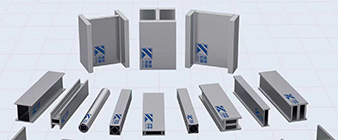1.4539 stainless steel, also known as 317LN, is a high-performance austenitic stainless steel with excellent corrosion resistance and mechanical properties. The following is a detailed overview of the performance characteristics of 1.4539 stainless steel:
1.4539 stainless steel has excellent resistance to pitting, crevice and stress corrosion cracking, making it suitable for use in a wide range of corrosive environments.
The alloy contains 18-20% chromium, 11-14% nickel and 3-4% molybdenum, which help enhance its corrosion resistance.
1.4539 has good resistance to a wide range of acids, chlorides and other corrosive media, making it the first choice for applications in the chemical processing, petrochemical and marine industries.
1.4539 stainless steel has good resistance to a wide range of chemicals, including organic and inorganic acids and various alkaline solutions.
The high molybdenum content in the alloy increases its resistance to localized corrosion, such as pitting and crevice corrosion, in aggressive chemical environments.
1.4539 is commonly used in equipment, piping and components in the chemical processing, pharmaceutical and food processing industries.
1.4539 stainless steel maintains its mechanical properties and corrosion resistance at temperatures ranging from low temperatures to high temperatures up to 600°C (1112°F).
This thermal stability makes 1.4539 suitable for applications involving temperature fluctuations or exposure to high temperatures, such as heat exchangers or high-temperature chemical processes.
1.4539 stainless steel has good mechanical strength, with typical tensile strength of 520 to 680 MPa and yield strength of 240 to 400 MPa.
The material’s ductility and toughness make 1.4539 suitable for applications where some degree of mechanical stress or impact is expected, such as structural components, piping systems and equipment frames.
1.4539 stainless steel can be easily welded using a variety of techniques, including TIG, MIG, and plasma arc welding.
The material’s high ductility and formability make it easy to fabricate, including bending, rolling and machining, to produce a variety of structural profiles and parts.
This manufacturing flexibility enables the design and construction of complex equipment and structures using 1.4539 stainless steel.
The smooth, non-porous surface of 1.4539 stainless steel, combined with its excellent corrosion resistance, makes it easy to clean and maintain a high level of hygiene.
This property is particularly important in food processing, pharmaceuticals and other industries where cleanliness and hygiene are critical.
While 1.4539 stainless steel does not offer the same level of corrosion resistance as UNS N08904 (904L) in the harshest environments, it still offers excellent performance and is a widely used material in a variety of industrial applications, especially where In case of good corrosion resistance and mechanical properties.
-
 2024-9-16 316 Stainless Steel Performance Introduction
2024-9-16 316 Stainless Steel Performance Introduction -
 2024-9-29 Alloy 602 CA / 2.4633/N06025 Nickel-based alloy structural profiles
2024-9-29 Alloy 602 CA / 2.4633/N06025 Nickel-based alloy structural profiles -
 2024-9-21 S690 Universal Bearing Piles in civil engineering of Application
2024-9-21 S690 Universal Bearing Piles in civil engineering of Application -
 2024-9-19 UNS S32570 VS 1.4410 stainless steel structural profile
2024-9-19 UNS S32570 VS 1.4410 stainless steel structural profile -
 2024-9-20 1.4404 stainless steel structural profiles in civil engineering applications
2024-9-20 1.4404 stainless steel structural profiles in civil engineering applications -
 2024-9-16 316L Stainless Steel Performance Introduction:
2024-9-16 316L Stainless Steel Performance Introduction: -
 2024-9-19 UNS S32570 stainless steel hollow structural profile
2024-9-19 UNS S32570 stainless steel hollow structural profile



